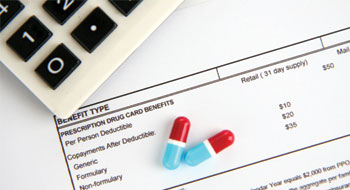

Generic drugs represent the only component of Canadian healthcare in which costs are decreasing. On March 29, more than 100 plan sponsors, group insurers and consultants met in Toronto to discuss opportunities for generic drugs to increase cost savings for all healthcare stakeholders. The half-day Value of Generic Drugs Symposium, held at the Fairmount Royal York Hotel, was sponsored by the Canadian Generic Pharmaceutical Association (CGPA) and presented by Benefits Canada.
The total prescription drug market in Canada is approximately $22 billion annually. While generic drugs represent 57% of all prescriptions by volume, they account for only 26% of the total market revenue. “Clearly, generic drugs provide excellent value for Canadians,” said Jim Keon, president of the CGPA, in his introductory remarks. Those savings will increase, as retail or reimbursed prices for generics are being reduced in more than 95% of Canadian retail markets.
The Canadian landscape
While generic drug prices are dropping, they are still higher in Canada than internationally, said John Abbott, CEO of the Health Council of Canada. He presented the findings of the Council’s 2010 discussion paper “Generic Drug Pricing and Access in Canada: What are the Implications?”
The paper included these key recommendations:
- Drug insurance plans could bring their maximum reimbursement prices into line with international prices.
- Reimbursement prices could be set at the pharmacy level.
- The use of alternative and competing distribution channels could be encouraged.
- Drug plans could use tiered formularies to encourage their beneficiaries to use low-cost drugs.
- Provincial and territorial drug plans could ensure timely listing of newly approved drugs on their formularies.
- Expanding pharmacists’ scope of practice would moderate the impact of reducing generic drug prices and benefit Canadians.
The goal, said Abbott, is to modify policies, plans and procedures to achieve sustainability in both private and public sectors. Savings can then be put toward more urgent and emerging healthcare needs.
Appreciating variability
One reason Canadians may not be taking full advantage of the potential savings offered by generic drugs is the perception that generics are not the “same” as the originators. The problem, said Jake Thiessen, professor emeritus with the University of Toronto’s Leslie Dan Faculty of Pharmacy, is that most people do not fully understand the science of “acceptable variability.”
There will always be some inter-product and even intra-product variability, he explained. Many people may be surprised to know that a quality product meets regulatory requirements when its variability is within an acceptable range, such as within 10% of the label claim. Variability is also seen in an individual patient’s response to a drug over time and in the response of groups of patients to a drug on different occasions.
“What we have in Canada is very robust criteria that allow us to say whether two products are the same or different,” said Thiessen. This “gold standard” ensures that any generic drug approved by Health Canada is the “same” (i.e., within acceptable variability) as the originator’s drug in terms of quality, safety and effectiveness.
